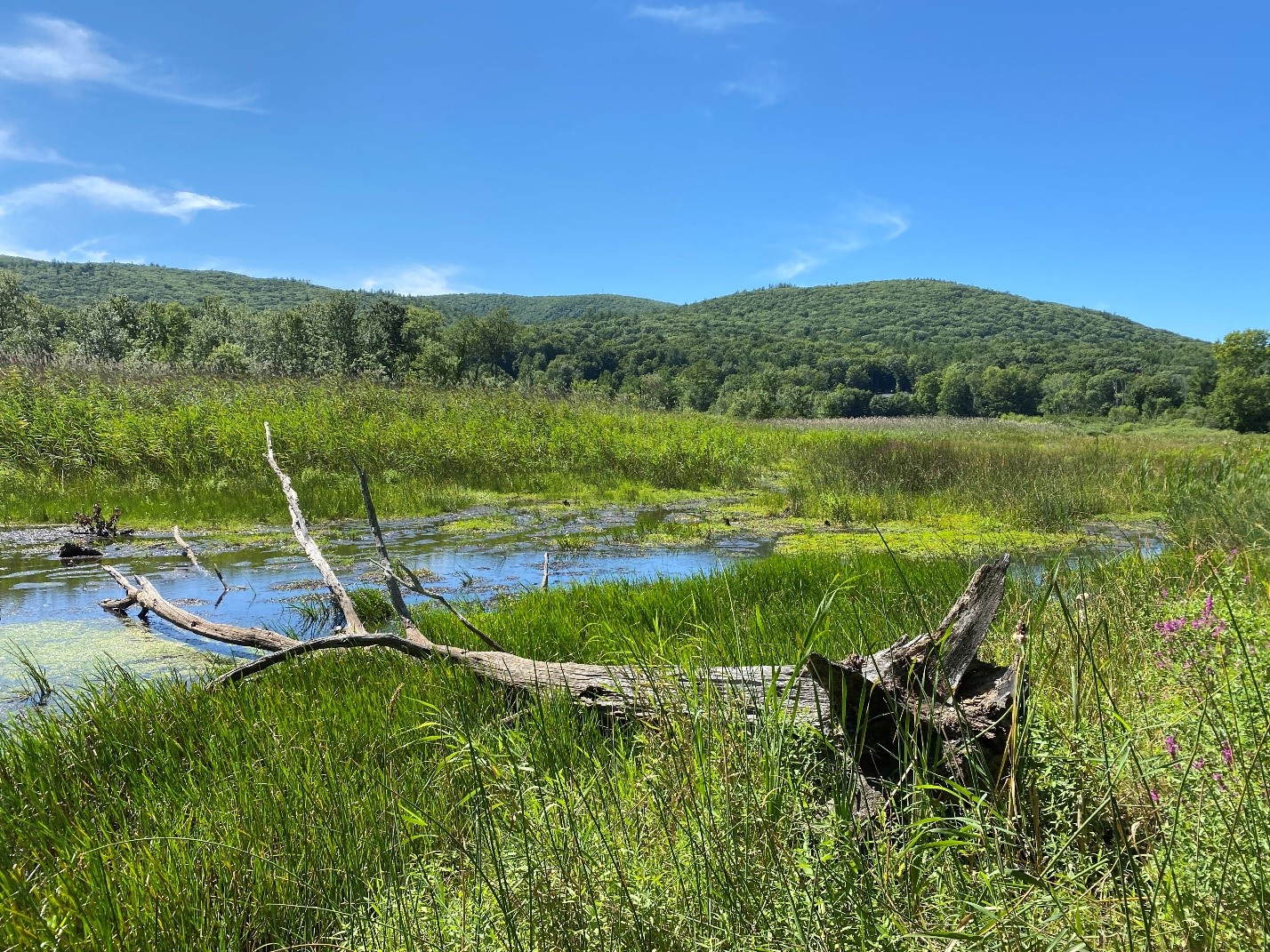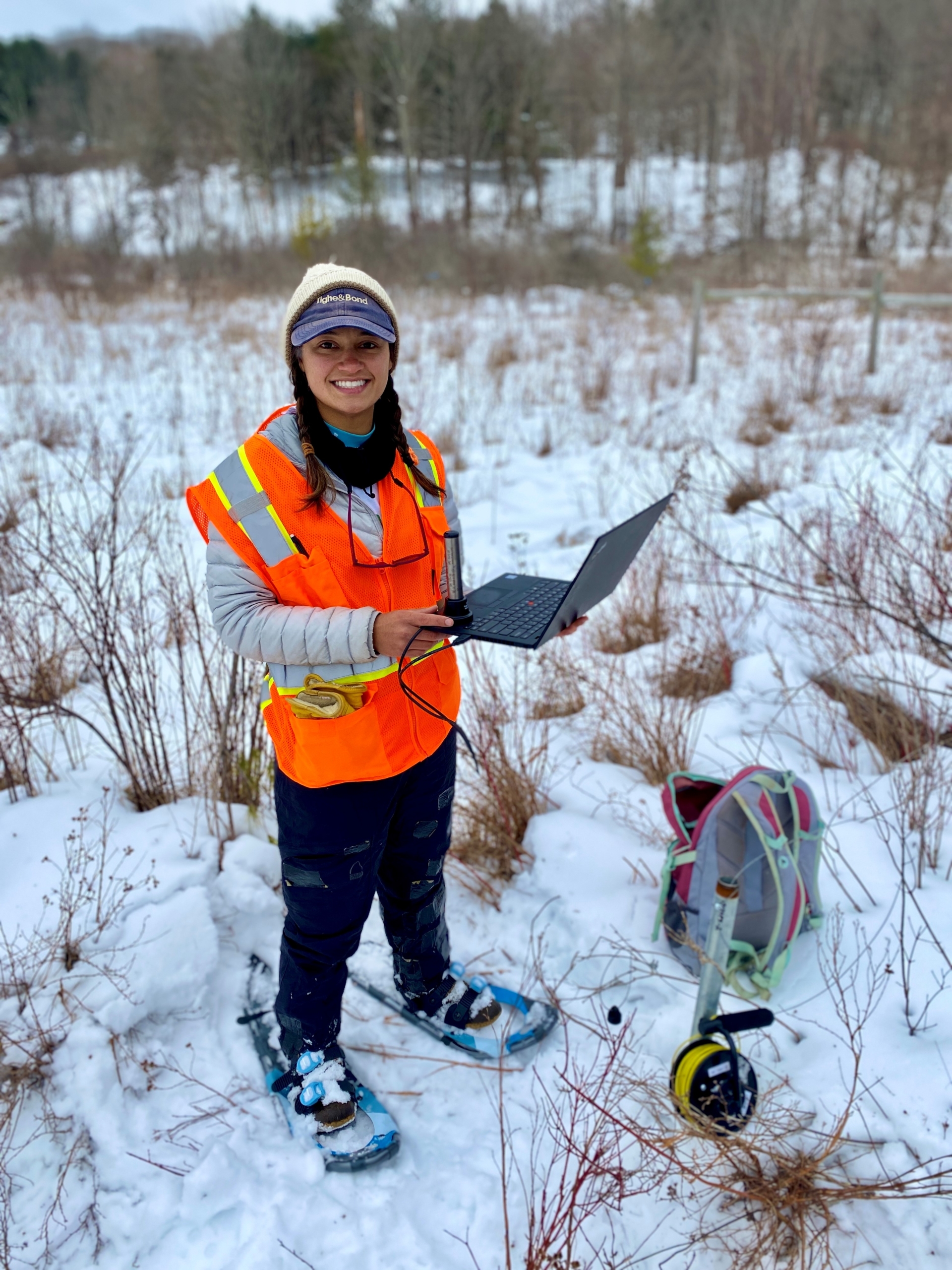How Environmental Scientists Are Using Data to Help Restore a Rare Calcareous Fen
Tighe & Bond’s environmental scientists are working with the Massachusetts Division of Fisheries and Wildlife (MassWildlife) to understand the driving factors of altered hydrology (the distribution, movement, and properties of water) at an ecologically significant fen in Western Massachusetts. This fen is a rare type of wetland that receives hydrologic input from calcium-rich groundwater originating from calcareous (calcium-containing) bedrock or glacial materials. The high levels of calcium foster a unique environment for calciphiles or calcium-loving plant species to thrive. According to MassWildlife, this site supports one of the most important examples of this type of wetland in the Commonwealth due to its composition, size, and sustained presence of a broad suite of highly specialized plants and rare species.

The flooded area of the fen with the invasive species, common reed (background left), and the aggressive but native cattail species (background right).
A recent shift in hydrology has resulted in the conversion of the plant community from native specialized species toward non-native and aggressive generalist species like cattail and common reed, reducing the distribution of native plants and the size of the sloping fen. Potential causes of the altered hydrology include increased beaver activity and stormwater runoff inputs, and the presence of a former road berm that is acting as an earthen dam.
In May 2020, MassWildlife retained Tighe & Bond to conduct groundwater elevation monitoring and a subsurface soils characterization. Our team will use this information to recommend potential solutions to mitigate the negative impacts of altered hydrology.

Environmental Scientist April Doroski, CPSS collects hydrologic data from the piezometers in February 2021.
To monitor the elevation of the groundwater our team strategically installed piezometers both upstream and downstream of, and within the earthen berm. The piezometers include a data logger device placed in a metal or PVC screened pipe that was driven or installed using drilling equipment in the ground. The data logger measures groundwater data every 15 minutes including groundwater pressure (which is converted to groundwater elevation) and temperature. This data will be analyzed to better understand how groundwater moves through the fen.
A subsurface soil characterization program was also conducted in various locations throughout the fen to provide further insight on groundwater movement through the fen and the impacts of the earthen berm. Precipitation data and watershed characteristics are also being collected and assessed.
After the yearlong monitoring program, Tighe & Bond will synthesize soil characterization results, groundwater monitoring data, and rain gauge data to develop a comprehensive report for MassWildlife. Tighe & Bond aims to identify the driving factors of altered hydrology and recommend potential solutions to mitigate the negative effects of altered hydrology. With Tighe & Bond’s help, MassWildlife will have the technical insight and supporting data to inform future decisions to restore the hydrology of this unique fen.


